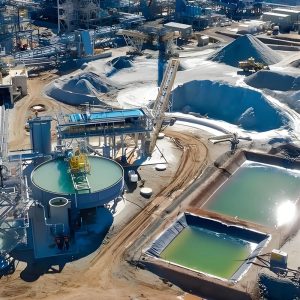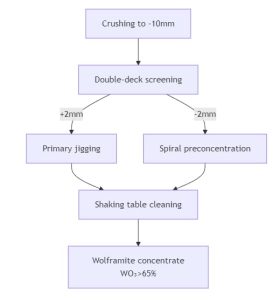Quartz sand is a type of quartz particle produced by crushing and processing quartz stone. Its primary component is silicon dioxide (SiO₂), and it possesses characteristics such as high hardness, strong wear resistance, and excellent chemical stability. It is widely used in various industrial fields, including glass, ceramics, and semiconductors.
Properties
Quartz sand is a non-metallic mineral with a Mohs hardness of 7, a density of approximately 2.65 g/cm³, and a melting point as high as 1750°C. It appears as a milky white or colorless translucent substance with an oily luster. It has stable chemical properties, is insoluble in acids (slightly soluble in KOH solution), and exhibits excellent refractory performance.
Quartz Sand Classification
1. Ordinary Quartz Sand (Industrial Grade)
Appearance: Natural yellowish surface (due to iron oxide coating), coarse to medium grain structure.
Processing: Mechanically washed, dried, and sieved (no chemical treatment). Secondary water filtration removes visible impurities.
Key Properties:
- High Fire Resistance: Withstands elevated temperatures.
- Filtration Efficiency: Ideal for trapping suspended solids in water.
Primary Use:
Water Treatment: Preferred for municipal/industrial filtration systems due to cost-effectiveness and turbidity control.
2. Refined Quartz Sand (Processed Grade)
Source: High-quality quartz ore subjected to rigorous beneficiation (manual selection, crushing, acid washing).
Key Features:
- Enhanced Purity: SiO₂ ≥ 99% – minimizes defects in end products.
- Controlled Grain Size: Customizable for industrial specs (e.g., 20–70 mesh).
Applications:
- Glass Manufacturing: Critical for float glass, bottles, and fiberglass (low bubble content).
- Refractories: Used in furnace linings and fireproof glass due to thermal stability (up to 1,600°C).
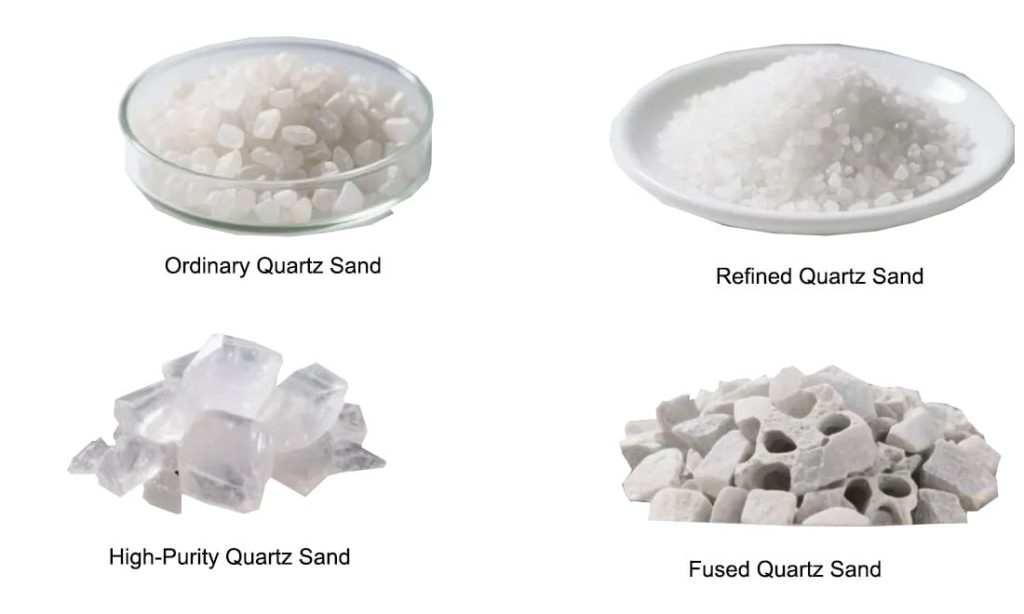
3. High-Purity Quartz Sand (HPQ, Specialty Grade)
Production: Ultra-fine processing of handpicked quartz crystals, followed by magnetic separation and acid leaching (HCl/HF).
Technical Specifications:
- Particle Sizes: Tunable from 1 mm (coarse) to 0.005 mm (ultrafine powder).
- Impurity Levels: ≤50 ppm metallic contaminants (Fe, Al, etc.).
Functional Advantages:
- Acid Resistance: Stable in corrosive environments (pH <1).
- Thermal Endurance: Retains structural integrity at 1,700°C+.
Industry Uses:
- Advanced Refractories: Kiln furniture, ceramic molds.
- Construction Chemistry: Acid-proof concrete/mortar for chemical plants.
- Electronics: Silicon wafer crucibles (99.99% SiO₂ required).
4. Fused Quartz Sand
Production: Fused quartz sand is an ultra-high-purity amorphous silica (SiO₂) material produced by melting natural quartz crystals or synthetic silica at extreme temperatures (1,700–2,000°C) and rapidly cooling to prevent crystallization.
Key Characteristics:
- Structure: Non-crystalline (glass-like) vs. crystalline quartz.
- Purity: ≥ 99.995% SiO₂ (trace metals <50 ppm).
- Thermal Stability: Low thermal expansion (5.5×10⁻⁷/°C), softening at 1,680°C.
- Optical Clarity: Transparent from UV to near-IR (190–2,500 nm).
- Chemical Inertness: Resistant to acids (except HF) and plasma etching.
Applications
① Electronics & Semiconductor
- Crucibles: For growing monocrystalline silicon (CZ process).
- Wafer Carriers: High-purity trays withstand 1,200°C annealing.
- Plasma Etch Components: ESR (electrostatic chuck) insulators.
② Optics & Photonics
- UV Lenses: For excimer lasers (193 nm ArF lithography).
- Fiber Optics: Low-OH content (<1 ppm) for telecom fibers.
③ High-Temperature Industrial
- Aerospace: Radomes (microwave-transparent nose cones).
- Solar: Diffusion tubes for polysilicon production.
④ Chemical & Labware
- Reaction Tubes: Corrosion-resistant liners for HCl/HNO₃.
- GC-MS Columns: Inert flow paths for analytical chemistry.
Quartz Sand Production Process and Equipment
Quartz sand is classified into the above four major categories based on purity and application: ordinary, refined, high-purity, and fused. Due to differences in purity requirements, the production processes for each category vary significantly in terms of crushing, grinding, and purification. The following sections break down the full production process for each type of quartz sand, identifying key equipment and operational considerations.
Ordinary quartz sand (SiO₂ 90%-99%) Process
Ordinary quartz sand is made from natural quartz stone (containing small amounts of soil and impurities). Its production process primarily includes crushing, washing, screening, and drying. The core requirement is “efficient crushing and grading,” with no need for complex purification, resulting in a simple process.
Raw Material Pre-Treatment
Quartz stone is uniformly fed into a jaw crusher (e.g., a PE600×900 model) using a vibrating feeder, coarsely crushed to a size of ≤200mm, and simultaneously removed are large surface impurities. If the clay content exceeds 5%, a wheel-type sand washer (e.g., XSD2610 model) is used for washing, and the de-clayed material proceeds to the next stage.
Crushing and grinding
The coarse crushed material is conveyed via a belt conveyor to a cone crusher (e.g., HPT200 model) for medium crushing to ≤50mm, then further crushed using an impact sand-making machine (e.g., VSI5X1145 model). This is combined with a 2YK1860 model vibrating screen for grading, producing semi-finished sand with a mesh size of 20-120. (screen mesh adjusted according to downstream requirements).
Drying and Packaging
The material is dried in a Φ2.2×12m drum dryer at a temperature of 120-150°C until the moisture content is ≤1%, then packaged using a DCS-50 automatic quantitative packaging scale, and the finished product is stored in the warehouse.
Key control points: Avoid over-crushing in the crushing process (fine powder content ≤3%) to reduce energy consumption in subsequent drying; treat sand washing wastewater in settling ponds for clarification and reuse to reduce water consumption.
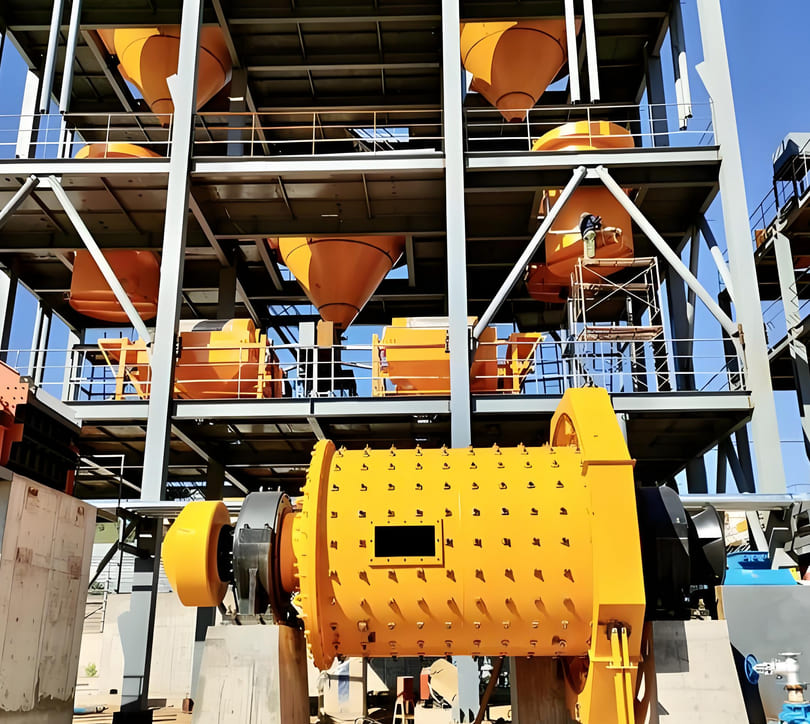
Refined Quartz Sand (SiO₂ 99%-99.5%) Process
Refined quartz sand requires the removal of certain impurities such as Fe₂O₃ and feldspar. An additional “purification stage” is added to the standard sand processing workflow, as follows:
Pre-treatment and crushing/grinding
Same as ordinary quartz sand, but after fine crushing, a 3YK2460 vibrating screen is used for precise grading to ensure the particle size deviation of the semi-finished sand is ≤5% (e.g., glass-grade sand is controlled at 80-120 mesh).
Magnetic separation for iron removal
The graded sand is fed into a CTB718-type wet permanent magnet drum magnetic separator (magnetic field strength 1500-2000 Oersted) to remove strongly magnetic impurities (Fe₂O₃), reducing iron content to below 50 ppm.
Floating separation of impurities
If non-magnetic impurities such as feldspar and mica are present, an XCF-KYF16 type combined flotation machine is used: adjust the pH of the slurry to 2-3 with sulfuric acid, add oil acid (collector) and water glass (inhibitor), and float separate the feldspar, with the flotation time controlled at 8-10 minutes.
Drying and packaging
Dry using a Φ2.4×14m drum dryer, with subsequent processes following standard quartz sand procedures.
Key control points: During magnetic separation, maintain the slurry concentration at 30%-35% to ensure sufficient contact between impurities and the magnetic field; the flotation reagent ratio must be adjusted based on the mineral composition (e.g., when feldspar content is high, increase water glass usage to 2000 g/t).
High-Purity Quartz Sand (SiO₂ ≥99.9%) Process
High-purity quartz sand requires the removal of trace impurities (Fe₂O₃ ≤10ppm). This complex process focuses on “deep purification.” The specific process is as follows:
Raw Material Selection
Use high-quality quartz with SiO₂ ≥99.5% to avoid the increased difficulty of purification caused by high impurities.
Crushing and Grinding
Use a jaw crusher for coarse crushing, a cone crusher for secondary crushing, and a ball mill (with an agate liner to prevent metal contamination) for fine crushing. Grind to 300-500 mesh (for photovoltaic cutting sand). Use a hydrocyclone for classification to ensure a particle size deviation of ≤5μm.
Acid Leaching
Place the sand in an acid-resistant reactor and add a mixture of 10%-15% hydrochloric acid and 5%-8% hydrofluoric acid. Soak at 60-80°C for 4-6 hours to dissolve metal oxide impurities such as Al₂O₃ and CaO. After the reaction, rinse with deionized water until the pH reaches 7 to remove any residual acid.
High Gradient Magnetic Separation
A high-gradient magnetic separator with a magnetic field strength of ≥15,000 Oersteds is used to remove weakly magnetic impurities (such as TiO₂) remaining after acid leaching, reducing the iron content to below 10 ppm.
Washing and Classification
Wash the sand repeatedly with deionized water 3-4 times to remove salt. Then, classify the sand in an ultrafine hydrocyclone to ensure that there are no agglomerated particles (≤1% agglomerated particles).
Drying
Dry the sand in a 200-250°C boiling dryer to prevent secondary attachment of impurities due to high temperatures. Finally, vacuum pack the sand to prevent moisture contamination.
Critical Control Points: The acid leaching process must be sealed to prevent hydrofluoric acid volatilization; the ball mill lining should be made of non-metallic materials to prevent metal ion contamination; the finished product must be stored in a clean room after drying.
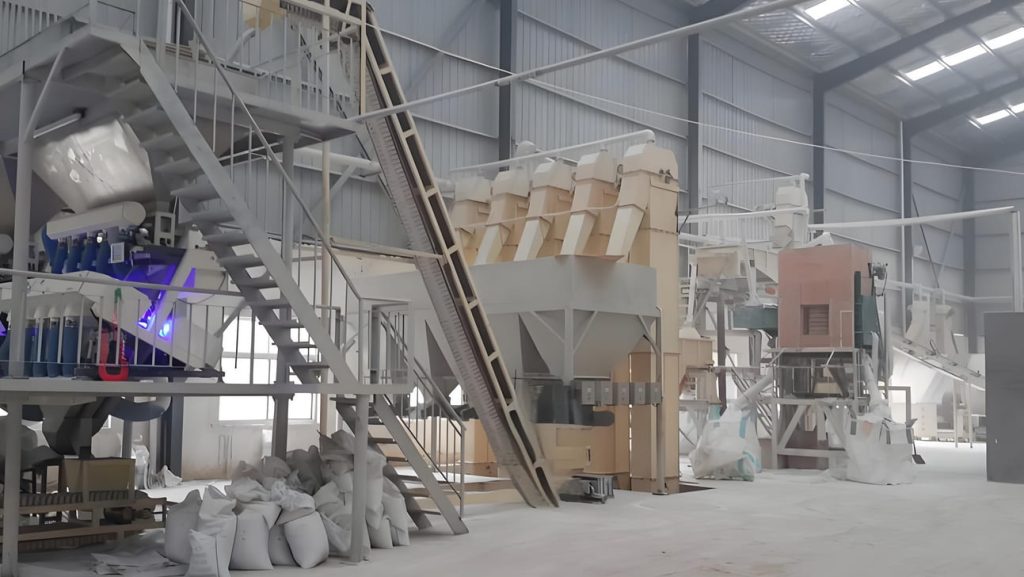
Fused Quartz Sand (SiO₂ ≥99.95%) Process
Fused quartz sand is made from high-purity quartz sand. The core process is “high-temperature melting.” The process is as follows:
Raw Material Pretreatment
High-purity quartz sand with SiO₂ ≥99.9% is selected and vibrated through a vibrating screen to remove coarse particles (≥1mm) to ensure uniform raw material.
High-Temperature Melting
The raw material is fed into an electric arc furnace or induction furnace at 1700-1800°C for 2-3 hours. Continuous stirring is required to prevent bubbles and impurity precipitation in the melt. After melting, the melt is naturally cooled to room temperature to form a glassy body.
Crushing and Classification
A jaw crusher (with non-metallic lining) is used for coarse crushing of the glass, followed by fine crushing using an impact sand maker (with rubber lining). Classification is performed using a 4YK2870 vibrating screen to produce products of varying fineness (for example, sand for precision casting is controlled within 120-200 mesh).
Screening and Impurity Removal
An ultrasonic vibrating screen (mesh size determined by requirements) is used to remove fine powder and coarse particles, ensuring a qualified particle size yield of ≥98% for the finished product.
Critical Control Points: The melt temperature must be stable (fluctuation ≤ 50°C) to avoid affecting the product’s thermal expansion coefficient; non-metallic linings are used in the crushing process to prevent the incorporation of metallic impurities.
Core differences in the four major types of quartz sand processes
| Quartz Sand Type | Core Process Differences | Key Equipment | Product Purity Rarget |
| Ordinary Quartz Sand | No purification, focusing on crushing and classification | Jaw crusher, sand making machine, drum dryer | SiO₂ 90%-99% |
| Refined Quartz Sand | Additional magnetic separation + flotation | Magnetic separator, flotation machine | SiO₂ 99%-99.5% |
| High-Purity Quartz Sand | Acid leaching + high-gradient magnetic separation for deep purification | Acid-resistant reactor, high-gradient magnetic separator | SiO₂ ≥99.9% |
| Fused Quartz Sand | High temperature melting + non-metal crushing | Electric arc furnace, non-metallic liner crusher | SiO₂ ≥99.95% |
Conclusion
Quartz sand production involves five core stages from raw material processing to final packaging: crushing (coarse, medium-fine, and sand-making) → washing (scrubbing, magnetic separation, flotation) → screening (vibrating screen/hydraulic classification) → drying (triple-pass rotary dryer) → packaging. The process intensifies with product grades (standard, refined, high-purity, fused): standard sand focuses on physical impurity removal (magnetic separation + screening), refined sand incorporates chemical purification (acid leaching + flotation), high-purity quartz requires high-temperature chlorination roasting (1000°C+), and fused quartz demands electric arc melting (1700°C) followed by rapid quenching. Key equipment includes jaw/cone crushers for fragmentation, VSI sand makers for particle size control, and magnetic separators, acid tanks, and high-temperature furnaces for final purity. The entire process revolves around three core objectives—impurity removal (Fe/Al/organics) + particle size control + purity enhancement—with costs and complexity rising significantly alongside product value.


